Just 750m away from Prasat Muang Tam, Kuti Ruesi Ban Khok Mueang (กุฏิฤาษีบ้านโคกเมือง) was built much later by King Jayavarman VII (r. 1182-1219) for one of the 102 arogayasala (hospitals) he opened across the empire. It has the standard arogayasala design: a single east-facing tower, a single bannalai southeast of the tower, an enclosure with just one gopura, and a rectangular pond outside to the northeast; all built of laterite with sandstone only for trim.
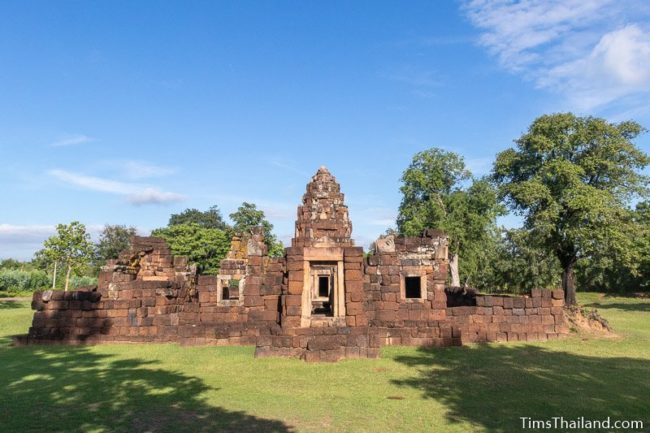
The main prang, capped by a large lotus bud, is quite beautiful, even though most of the carving (the pediment, everything around both the outer and inner doorways, and even some of the antefixes) was never finished. Also, you can see carvings on a few of the laterite blocks, a reminder that all the laterite was once covered by plaster.
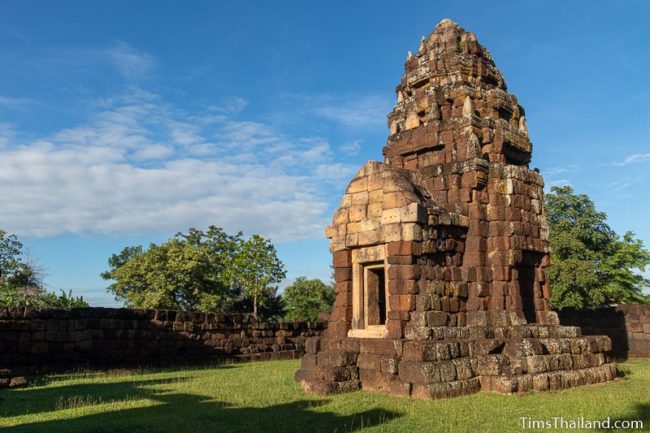
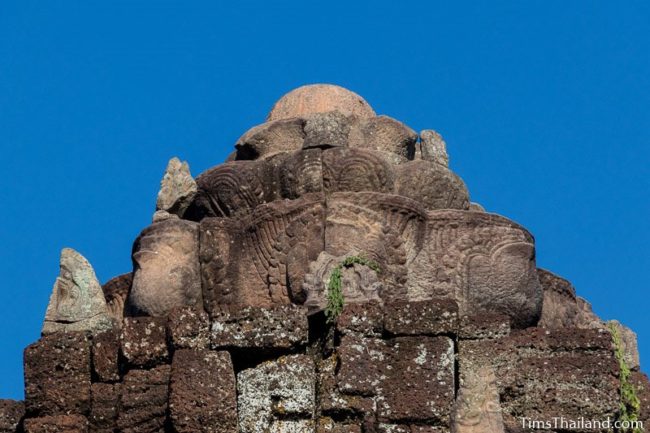
Most of the antefixes are the usual guardian figures and naga, but there is an interesting one on the second level of the east side that shows two figures. It’s not a very good carving (done by a local artist rather than a royal one?) but the shape of the head of the lower figure and the position of one above the other reveal them as Vishnu riding a garuda. While Kuti Ruesi Ban Khok Mueang was built as a Mahayana Buddhist temple, the Khmer often mixed Buddhism and Hinduism.
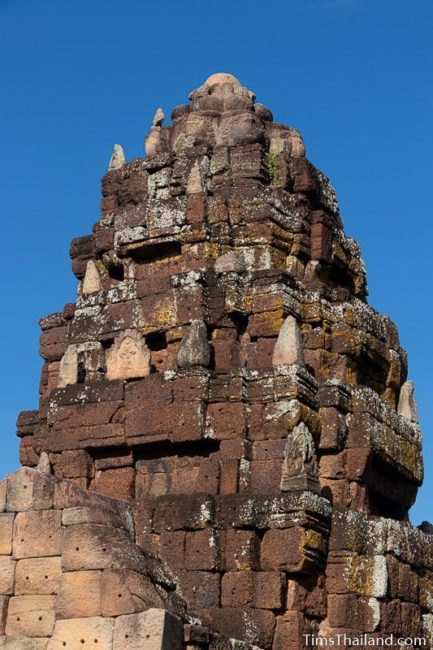
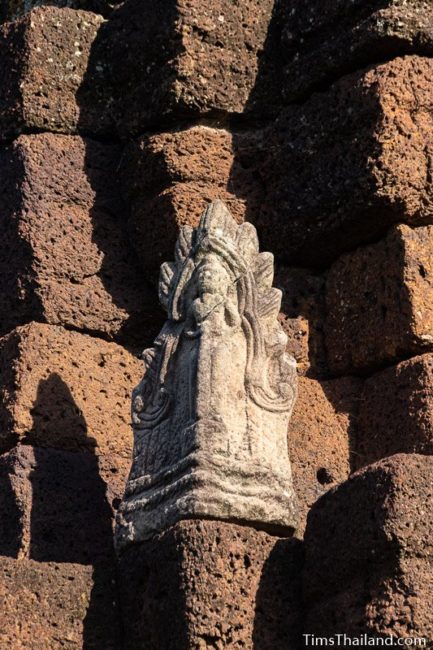
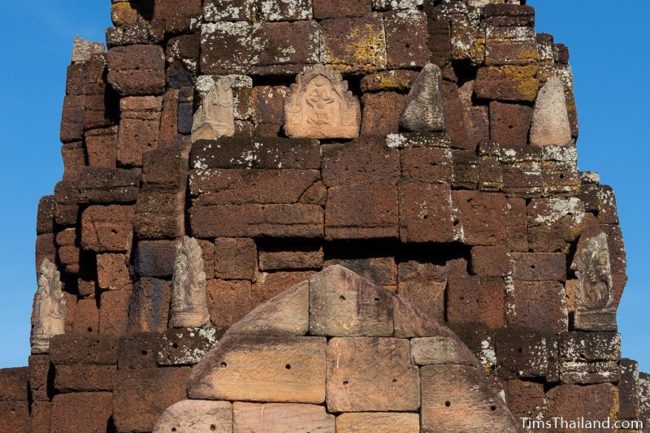
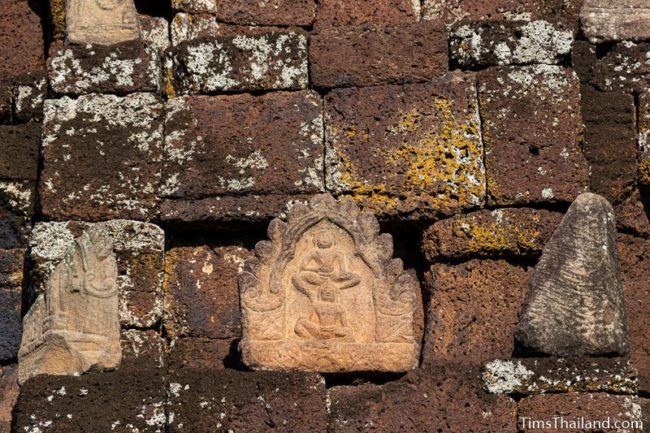
The short mandapa entrance chamber has a window on the south side only. Notice there are holes for the balustrades on the windowsill, but not on the head. Whether this was a decision made during restoration, another example of unfinished work, or evidence or repurposing old blocks during construction is unknown.
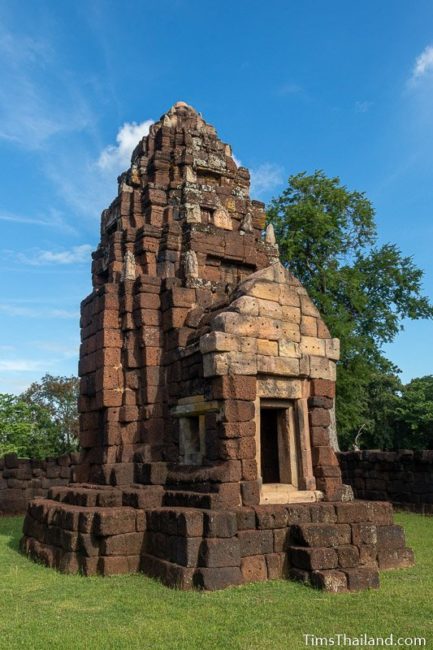
Under the tower is a three-holed pedestal. It would have held a Buddha sheltered by a naga in the middle with Avalokitesvara and Prajnaparamita, male and female bodhisattvas of compassion, on the sides.
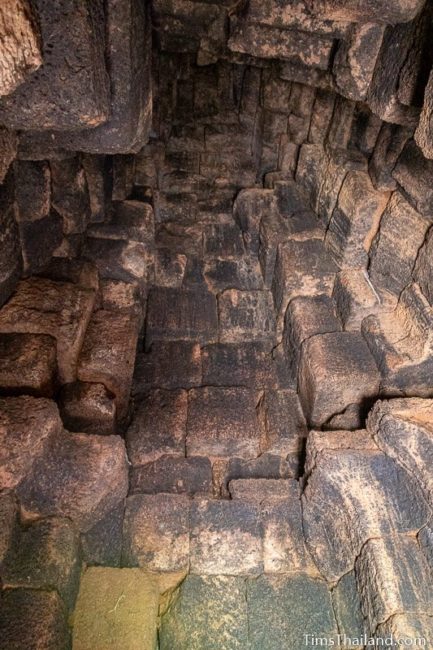
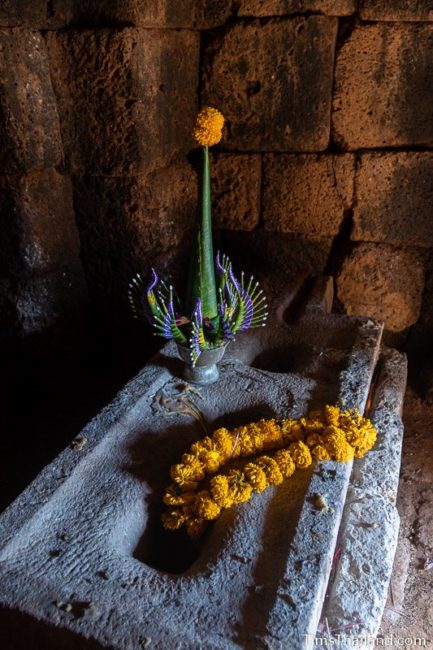
The roof is gone, but the walls of the west-facing bannalai still stand. Like the main building, the carving around the doorways was never done, although there are naga cornerpieces and some lotus trim around the top. Here you can easily notice that the naga have garlands in their mouths, which is a common feature from the much earlier Baphuon period. (Jayavarman VII’s period is called Bayon.) It’s likely they were brought from elsewhere, but they could have been carved to imitate those at the older Prasat Muang Tam. Naga on the gopura and main tower antefixes are Baphuon style too.
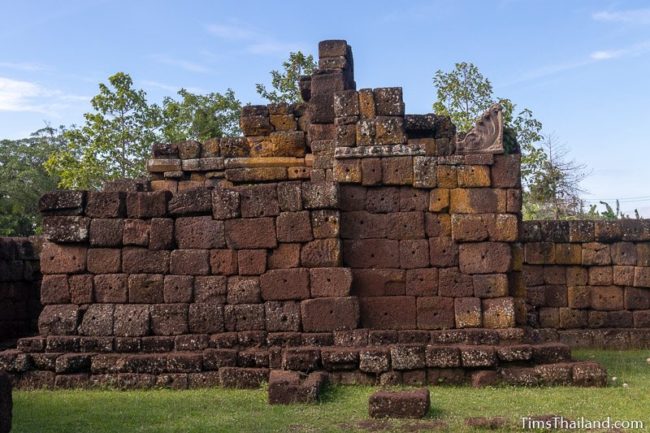
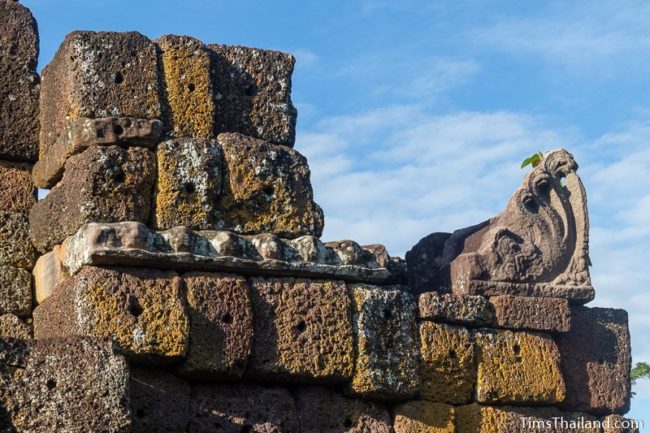
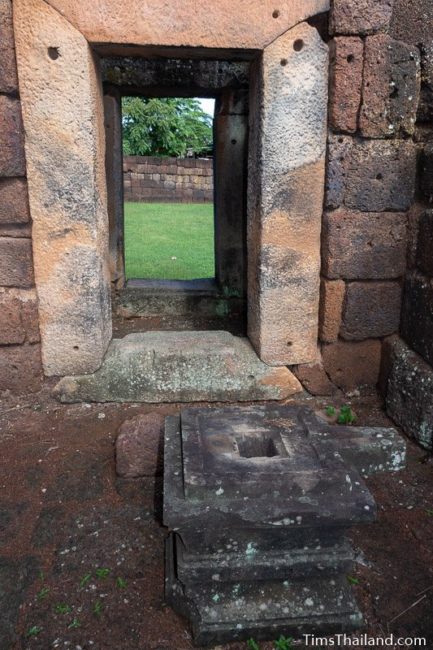
A curious feature of Kuti Ruesi Ban Khok Mueang is the row of laterite blocks sticking out of the bannalai‘s north wall. At a quick first glance, it appears to be a somasutra channel for draining holy water, but you wouldn’t expect to find one here, and there’s no obvious hole in the wall or floor to let the water out. (Although there is one stone in the floor unlike the others, so perhaps this was it?) There’s no way to know what it really was, or even if it was added after the Khmer left. It’s certainly possible the groove was cut for holding something, such as wood or bamboo, and along with the other laterite in the ground here, it could have been part of a shrine, but that also seems unlikely.
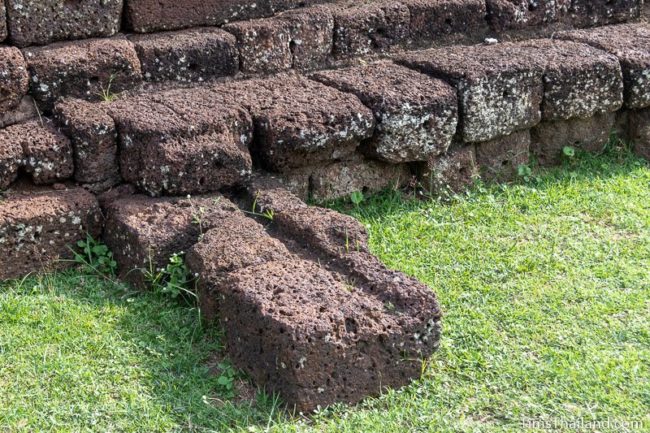
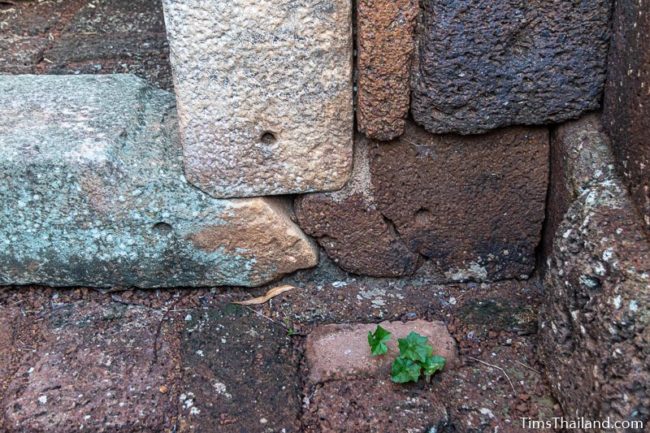
The prang and bannalai are surrounded by a fairly complete enclosure with a single, presently roofless gopura to the east. Like the other buildings, the sandstone around the doorways is uncarved. Mirroring the southern bias of the mandapa, there are two windows in the southern wing but just one in the north. And, strangely, sandstone blocks with holes for balustrades are found in some doorways.
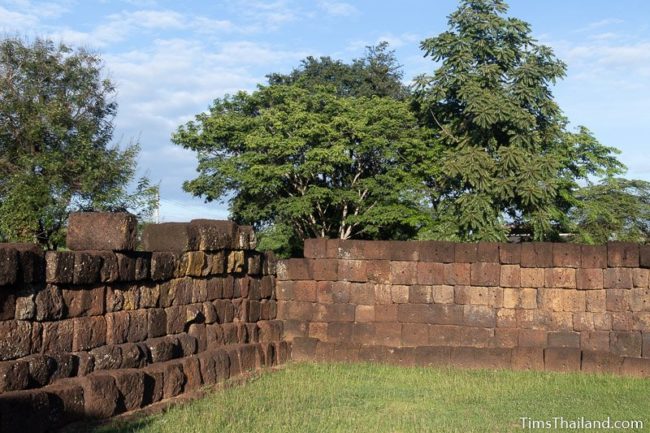
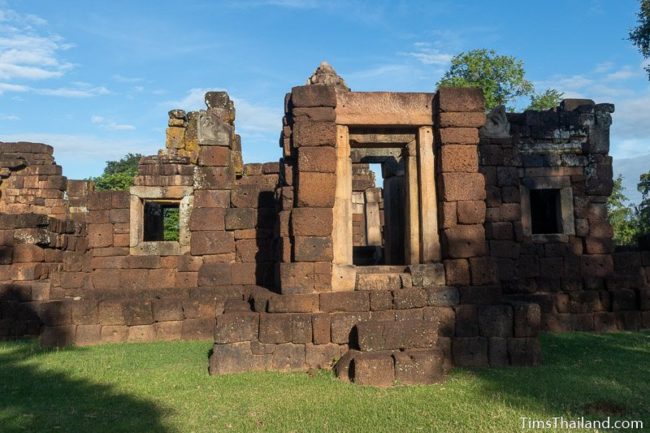
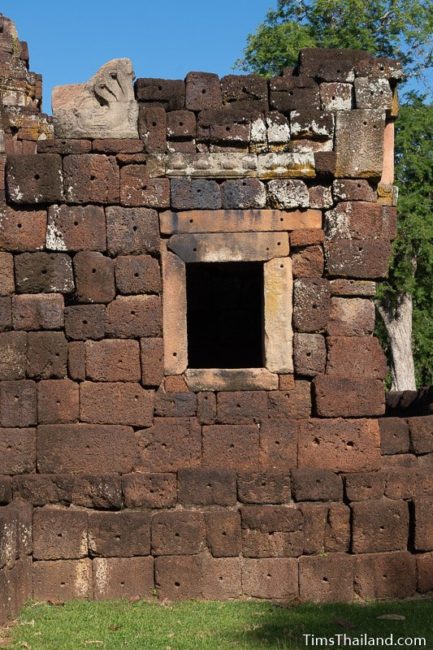
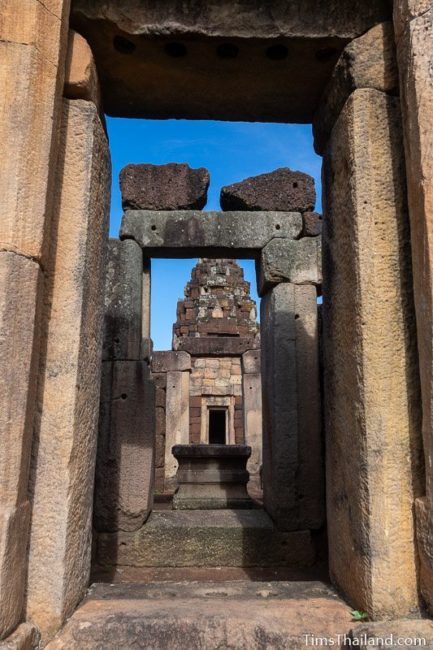
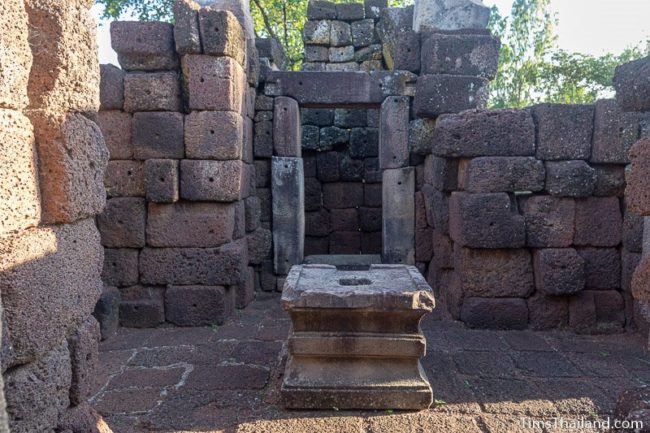
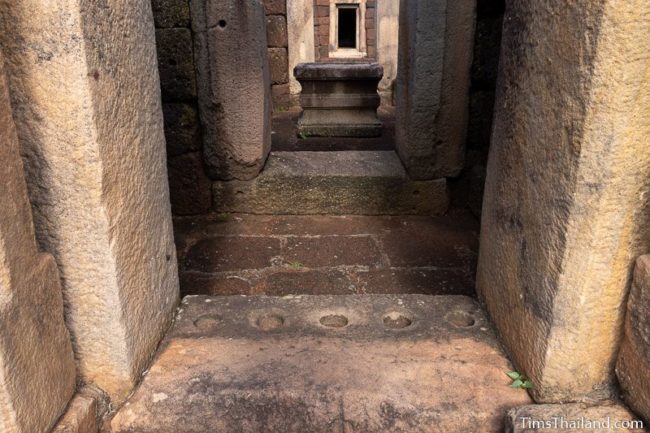
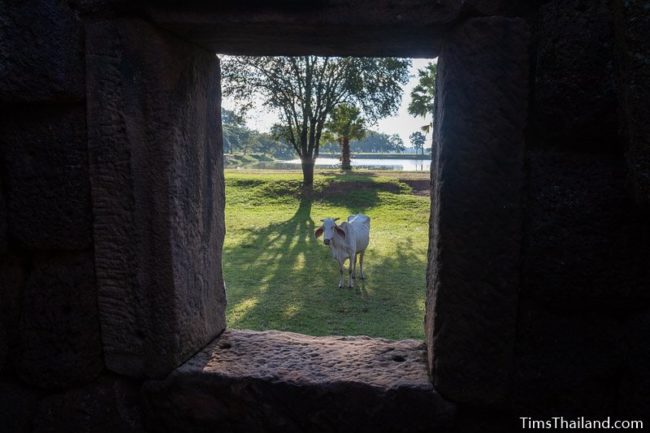
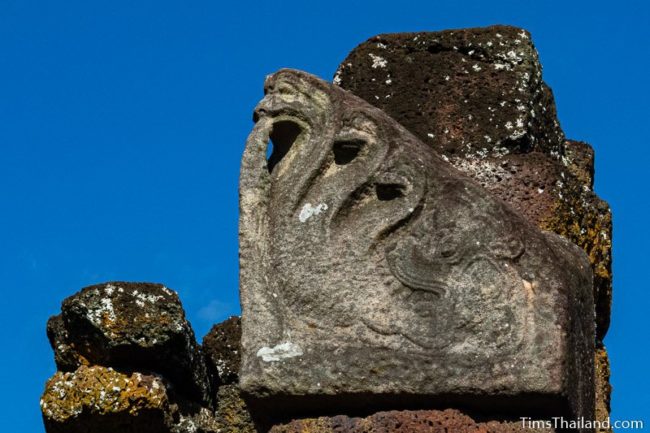
The pond, whose water was considered sacred, still has laterite steps around all four sides.
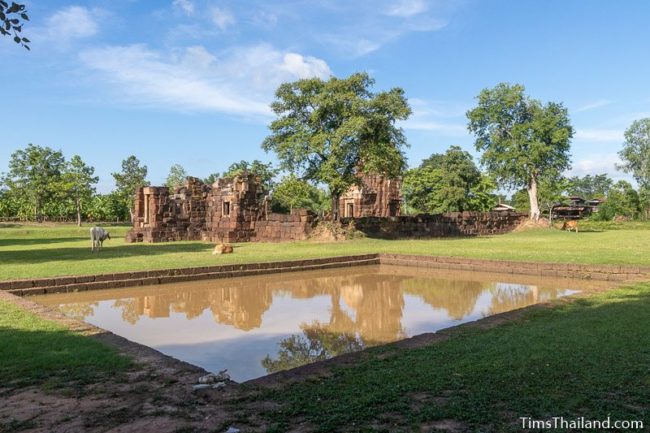
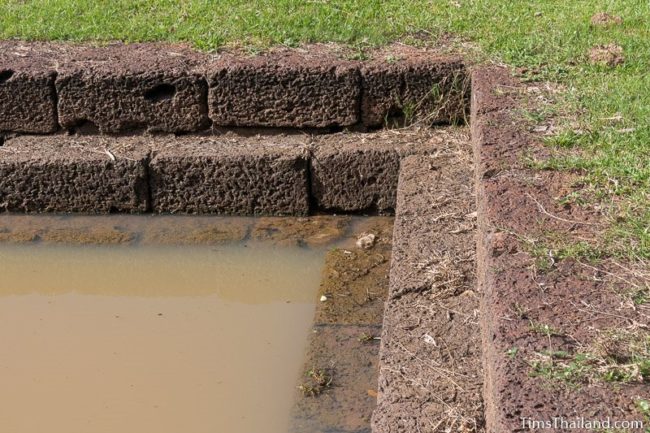
The excess stone, both laterite and sandstone, is kept at the back of the temple. Also, a few laterite blocks have been incorporated into the village spirit shrine in front.
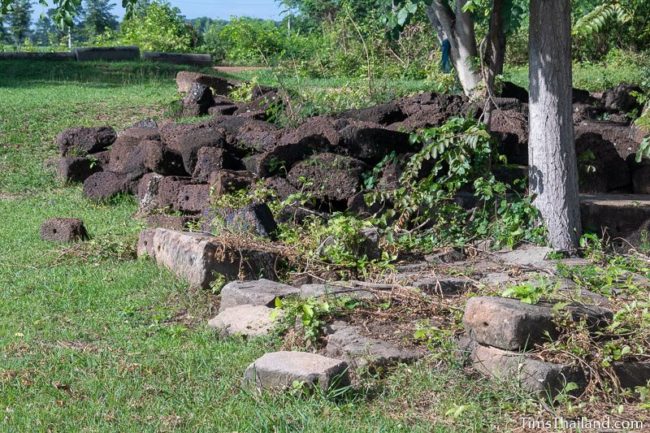
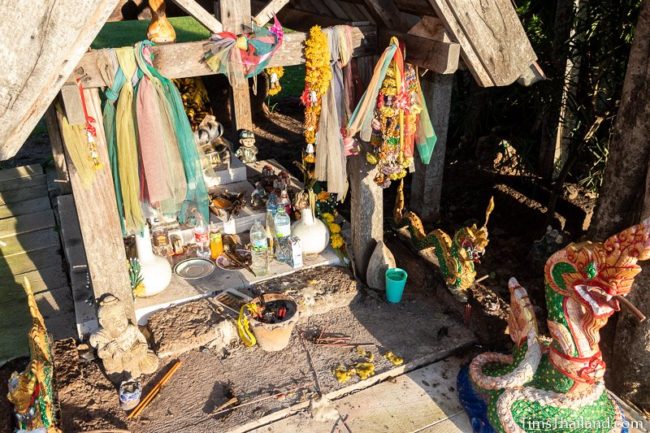
The massive baray built for Prasat Muang Tam is just 320m to the east of Kuti Ruesi Ban Khok Mueang, but there’s also a much smaller 200 by 110-meter baray right in front, between the temple and the big baray.
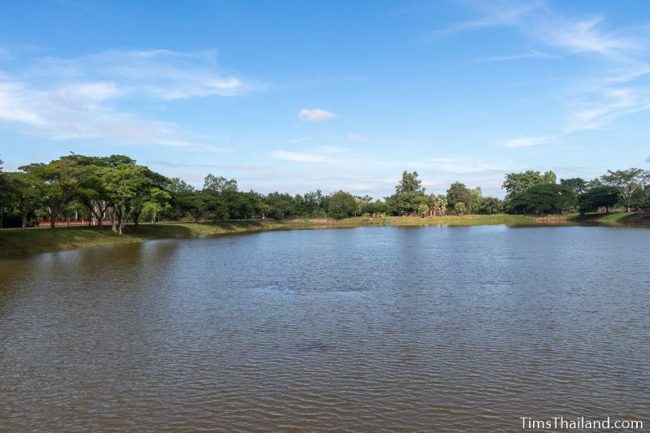
A similarly named arogayasala, Kuti Ruesi Ban Nong Bua Rai, lies just three and a half kilometers north, but Kuti Ruesi Ban Khok Mueang is more complete and has a better atmosphere.
Location – Ban Khok Muang, Tambon Chorakhe Mak, Amphoe Prakhon Chai, Buriram Province
Other Names – Kuti Ruesi Khok Mueang (กุฏิฤาษีโคกเมือง), Kuti Rishi Khok Muang, Kuti Reussi #2 (กุฎิฤษี 2). Locals call it Prasat Noi (“Small Temple”) as opposed to nearby Muang Tam, the big temple.